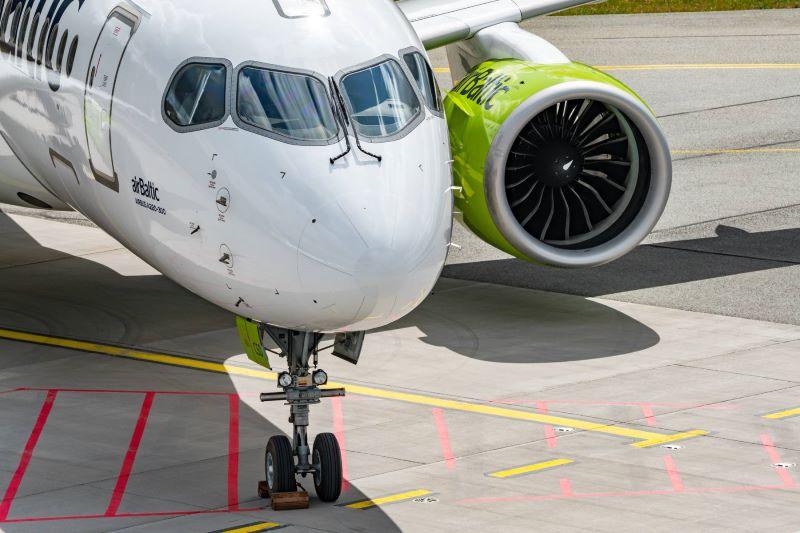
The FAA plans to mandate Airbus A220 electronic engine control software upgrades to prevent risk of an automatic dual-engine shutdown when the system is attempting to prevent an uncommanded high-thrust incident.
Under a proposed airworthiness directive set for release Oct. 25, A220 operators would have 12 months to upgrade Pratt & Whitney PW1500G full authority digital engine control (FADEC) software in affected aircraft. Software versions earlier than version 2.11.14.1 need upgrading, the directive said. The FAA’s proposal is based on a Pratt & Whitney service bulletin issued in June.
The issue came to light following a dual-engine shutdown upon touchdown that caused an unidentified airline’s A220 to lose braking capability when engine power and hydraulic systems were cut off, the FAA draft directive said. Investigators determined an auto throttle command to maintain a target thrust level “immediately followed by pilot command to decrease throttle to idle, caused a transient disagreement between actual and commanded thrust,” the FAA said. “This disagreement triggered the thrust control malfunction detection (TCMD) logic and resulted in dual engine shutdown once the weight on wheels signal was activated upon landing.”
Pratt’s revised software changes the criteria for triggering TCMD logic, which is designed to prevent uncommanded high-thrust events, particularly asymmetries and incidents during takeoff and landing.
The directive does not provide details on the incident, but the sequence of events matches a July 11, 2021 occurrence involving an Air Baltic A220-300 at Copenhagen. As the aircraft was descending into Copenhagen with both the autopilot and autothrottle engaged, the crew retarded the trust levels to idle, “resulting in a disengagement of the autothrottle,” a Danish Accident Investigation Board summary of the incident said. That was followed by illumination of the R THROTTLE FAIL master caution light. The crew ran through the applicable non-normal checklist and continued the descent.
Once both main landing gear wheels were on the runway, both engines shut down automatically. The flight crew maintained control and exited the runway safely.
Danish investigators delegated investigation of the incident to Canada’s Transportation Safety Board. The probe is ongoing.

